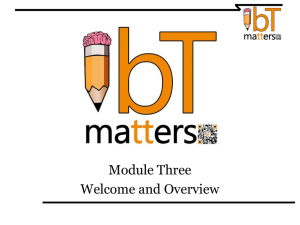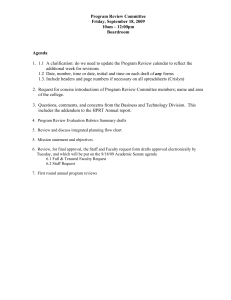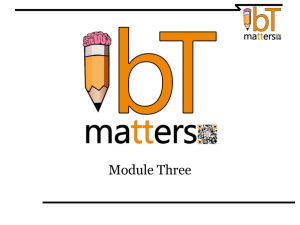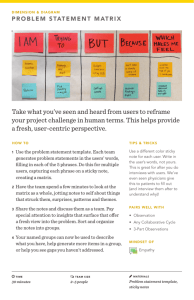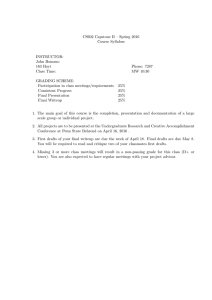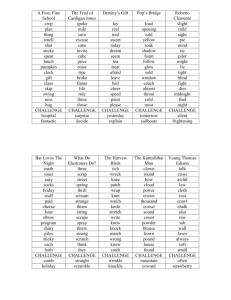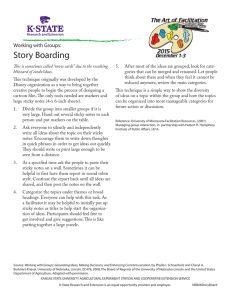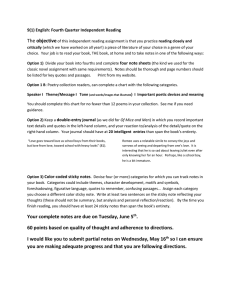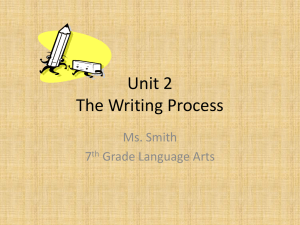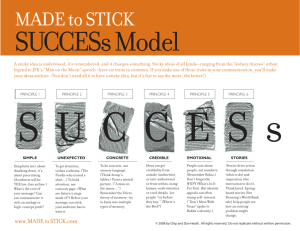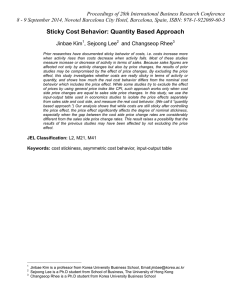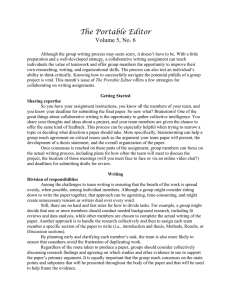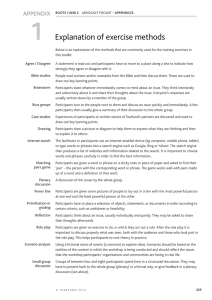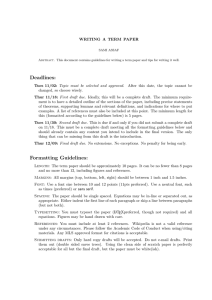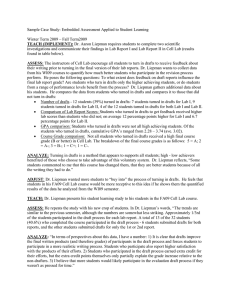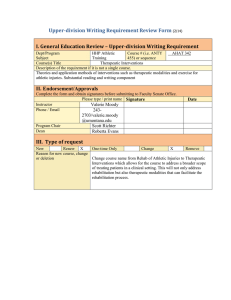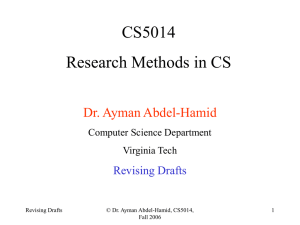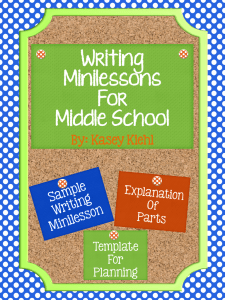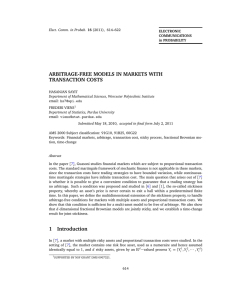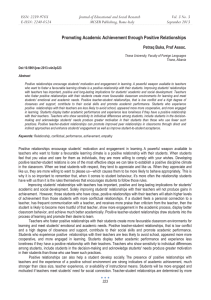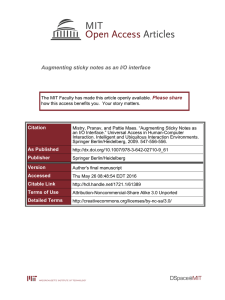use author's agenda to develop understanding of writing process
advertisement
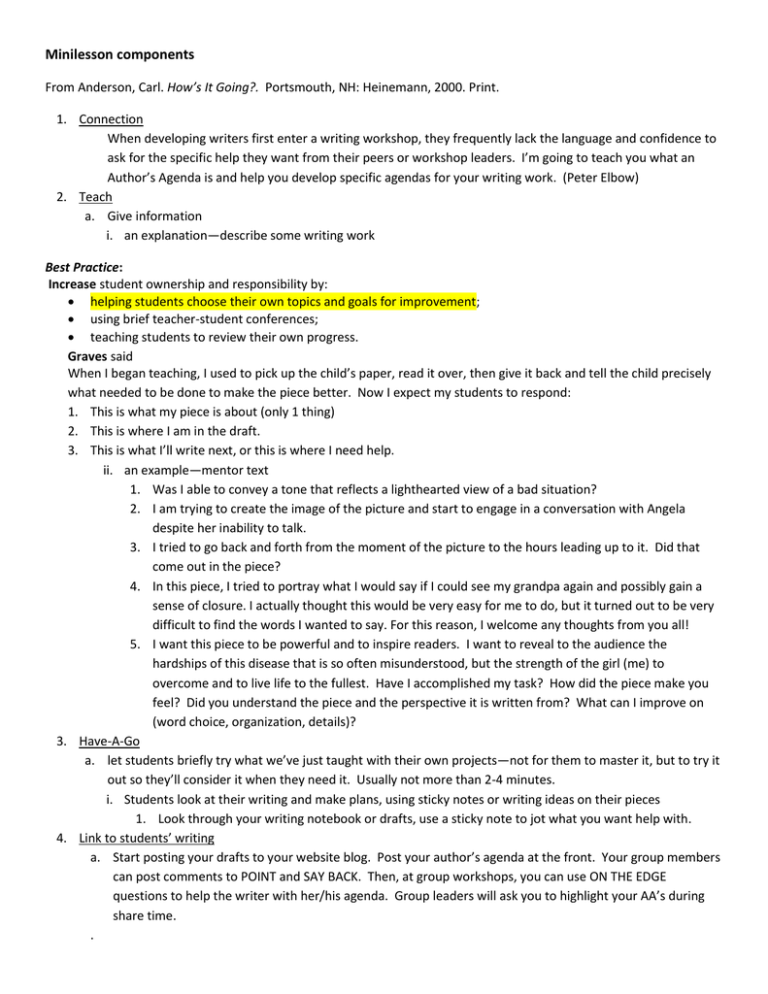
Minilesson components From Anderson, Carl. How’s It Going?. Portsmouth, NH: Heinemann, 2000. Print. 1. Connection When developing writers first enter a writing workshop, they frequently lack the language and confidence to ask for the specific help they want from their peers or workshop leaders. I’m going to teach you what an Author’s Agenda is and help you develop specific agendas for your writing work. (Peter Elbow) 2. Teach a. Give information i. an explanation—describe some writing work Best Practice: Increase student ownership and responsibility by: helping students choose their own topics and goals for improvement; using brief teacher-student conferences; teaching students to review their own progress. Graves said When I began teaching, I used to pick up the child’s paper, read it over, then give it back and tell the child precisely what needed to be done to make the piece better. Now I expect my students to respond: 1. This is what my piece is about (only 1 thing) 2. This is where I am in the draft. 3. This is what I’ll write next, or this is where I need help. ii. an example—mentor text 1. Was I able to convey a tone that reflects a lighthearted view of a bad situation? 2. I am trying to create the image of the picture and start to engage in a conversation with Angela despite her inability to talk. 3. I tried to go back and forth from the moment of the picture to the hours leading up to it. Did that come out in the piece? 4. In this piece, I tried to portray what I would say if I could see my grandpa again and possibly gain a sense of closure. I actually thought this would be very easy for me to do, but it turned out to be very difficult to find the words I wanted to say. For this reason, I welcome any thoughts from you all! 5. I want this piece to be powerful and to inspire readers. I want to reveal to the audience the hardships of this disease that is so often misunderstood, but the strength of the girl (me) to overcome and to live life to the fullest. Have I accomplished my task? How did the piece make you feel? Did you understand the piece and the perspective it is written from? What can I improve on (word choice, organization, details)? 3. Have-A-Go a. let students briefly try what we’ve just taught with their own projects—not for them to master it, but to try it out so they’ll consider it when they need it. Usually not more than 2-4 minutes. i. Students look at their writing and make plans, using sticky notes or writing ideas on their pieces 1. Look through your writing notebook or drafts, use a sticky note to jot what you want help with. 4. Link to students’ writing a. Start posting your drafts to your website blog. Post your author’s agenda at the front. Your group members can post comments to POINT and SAY BACK. Then, at group workshops, you can use ON THE EDGE questions to help the writer with her/his agenda. Group leaders will ask you to highlight your AA’s during share time. .
